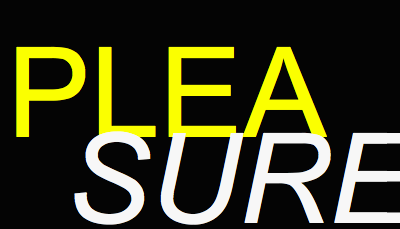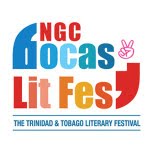The Waving Gallery, by Mervyn Taylor
(Shearsman Books, ISBN 9781848613300, 80pp.)
TRAVEL does things to you. The traveller is in a position like no other. While in transit, whole nations are stripped away by the journey, leaving the individual on their own. Here, the traveller is reduced to their core being. While in transit from one place to another, you are confronted with the question: who am I? From this position of truth, the traveller is then bestowed a gift. Who would you like to be? The traveller, unlike others who stay at home, is in a position to take up whatever identity they please; is free to make new friends in a foreign land, to become whatever they want.
The poetry of Trinidadian poet Mervyn Taylor reflects these dynamics in his forthcoming collection, The Waving Gallery, which finds him grappling with familiar ground. Moreso than his previous book, No Back Door, his fifth book is organised explicitly around ideas of travel and differing stages of migration. The book, which will be published by Shearsman Books in January, comprises 60 poems divided into three parts: ‘Section 1. Leaving’; ‘Section 2. Overstayed’ and ‘Section 3. In Transit’.
There are ekphrastic poems ("Benefit of the Doubt"); poems ostensibly about poets and writers ("What Poets Wish For" ; "Edwidge’s Voyage"; "And Now This"; "The Old Ways") poems that tell stories; poems about characters; and poems that have the mood and feel of memoir ("Sedona"; "Storyteller"). All track a journey of some sort – whether literal or metaphorical, across countries or within a psychological terrain, over miles or between two people at rest in bed.
In the case of migration away from Trinidad and Tobago to other countries, the rationale for that journey itself is subject to Taylor’s scrutiny in the title poem, “The Waving Gallery.” Here, Taylor presents that phenomenon all Trinidadians of a certain age will remember. At the Piarco International Airport’s old terminal, there was a specific gallery with a view of the runway. It was the place families would go to literally see their loved ones off. I remember, as a child, its large windows, through which you could stare forever at airplanes before you saw the tiny speck of your auntie, tantie, cousin, mommy or daddy climbing up the steps of the airplane taking them away. Even after the plane left, families would hang around for what seemed, as a child, like eternity, mourning, as though at a teary-eyed wake, the loss of yet another loved one. With each trip, a visit to the waving gallery was regarded as inevitable, almost as inexorable as the need for the migration away from this country itself.
The new terminal no longer has a waving gallery but with a few brush-strokes Taylor vividly suggests this place for us. However, his poem questions that which was often not questioned in the gallery: the very rationale for the trip itself. The voice of the poem notes he was, on this occasion, “going away to study English, as if / it were not the language spoken here.” The abrupt diminishing of energy at the poem’s end reflects the point of realisation that English is native, meaning this country is already foreign in a sense: it is already a part of the world out there. What is out there is here. And what is here is out there.
Thus, the theme of migration is revealed to be a red-herring. It is true that it is often a journey away and a return; an alienation; an estrangement, which provokes reflection. But the reflection is possible, even inevitable, no matter who what when or where we are. Every country is the undiscovered country. In this respect, there are no foreign lands. We are always constantly learning and discovering aspects of each place – home or abroad – as we are constantly discovering life itself. And so the voice of “Countryside” is beset by uncertainty as to whether home is really home:
As many times as I’ve been there,
the roads remain strange, going east
when I think we’re headed south,
passing fields of the same farmers
who lift and shake their heads.
I’m sure I was born here, though
when I hold out my hand the fish
swim away, the men toast someone
behind a partition, and only one
aunt claims she still loves me.
Here is an uncertainty one senses even natives might feel. Taylor’s focus on intransigence leads us to see that it is not necessarily travelling which causes a rupture in personality, for it is the idea of personality itself which is malleable. With each minute, with each new experience, each new person, friend, and even stranger encountered, the individual changes. Yes, there is a core to us, but the penumbra of that core shifts like the weather. It is not travelling that changes you, but rather it is you. Taylor deals with those quiet transitional moments where the self is confronted with its own starkness: “Returning”; “Layover Trinidad”; “Life In The Islands”; “Marie, and Juan”. And he shows how that self flips about in poems like “Country of Origin”; “Poet in Peru”; “Language Major”.
The blurring of these lines is not limited to geographic and personal ideas, but also involves art: challenging the mediums though which we grapple with understanding reality itself, such as film. This is the centre of the incredible poem, “First Time Seeing Snow”. Taylor takes a common trope in post-colonial literature and uses it obliquely to raise an unexpected concern. In the poem, we expect some sort of jejune pastoral idyll about a West Indian going to a country with snow and being in awe, but instead we are presented with the idea of a depiction of snow on film, viewed while at home, not abroad in a temperate land. The poem focuses on how film not only presents but also can come to define reality in certain contexts. The voice of the poem reacts strongly to a banal glimpse of snow under a car tire in an old movie. In this way, the first snow is not a physical tangible thing: but something more cutting, almost as powerful, more unshakable: a seed planted in a mind from the screen. When snow falls, cars skid. It is an idea at once alien, exotic and revelatory for the man in the dark.
In these shifting sands, what are the imperatives which we must honour? Taylor has an idea. They include family, memory, society, truth, justice and, above all, love. We are changing, yes, but the heart and its propensity for irresistible impulses will always be the same. And so, in “Another Country” loneliness is compared from one country to the next.
These poems are often sophisticated exercises that find an easy tone. They appear unforced and seduce with their elegance and craft. They greet and surround us, stimulating the mind, making points by not making points, and all the while remaining beautiful – with smooth rhythms, well-chosen images and metaphors, and provocative enjambments – before waving us goodbye, leaving us to think of them when they are lost to us.
Taylor gives us no answers (nor is he asked to) but he moves us to something approaching wisdom. He seeks to teach us the value of the truly examined life, to re-route the trip somewhat: to make it a voyage into the interior. He knows how fast a life fades, as quickly and abruptly as the day ends in the opening poem “Mt Hololo.”
TRAVEL does things to you. The traveller is in a position like no other. While in transit, whole nations are stripped away by the journey, leaving the individual on their own. Here, the traveller is reduced to their core being. While in transit from one place to another, you are confronted with the question: who am I? From this position of truth, the traveller is then bestowed a gift. Who would you like to be? The traveller, unlike others who stay at home, is in a position to take up whatever identity they please; is free to make new friends in a foreign land, to become whatever they want.
The poetry of Trinidadian poet Mervyn Taylor reflects these dynamics in his forthcoming collection, The Waving Gallery, which finds him grappling with familiar ground. Moreso than his previous book, No Back Door, his fifth book is organised explicitly around ideas of travel and differing stages of migration. The book, which will be published by Shearsman Books in January, comprises 60 poems divided into three parts: ‘Section 1. Leaving’; ‘Section 2. Overstayed’ and ‘Section 3. In Transit’.
There are ekphrastic poems ("Benefit of the Doubt"); poems ostensibly about poets and writers ("What Poets Wish For" ; "Edwidge’s Voyage"; "And Now This"; "The Old Ways") poems that tell stories; poems about characters; and poems that have the mood and feel of memoir ("Sedona"; "Storyteller"). All track a journey of some sort – whether literal or metaphorical, across countries or within a psychological terrain, over miles or between two people at rest in bed.
In the case of migration away from Trinidad and Tobago to other countries, the rationale for that journey itself is subject to Taylor’s scrutiny in the title poem, “The Waving Gallery.” Here, Taylor presents that phenomenon all Trinidadians of a certain age will remember. At the Piarco International Airport’s old terminal, there was a specific gallery with a view of the runway. It was the place families would go to literally see their loved ones off. I remember, as a child, its large windows, through which you could stare forever at airplanes before you saw the tiny speck of your auntie, tantie, cousin, mommy or daddy climbing up the steps of the airplane taking them away. Even after the plane left, families would hang around for what seemed, as a child, like eternity, mourning, as though at a teary-eyed wake, the loss of yet another loved one. With each trip, a visit to the waving gallery was regarded as inevitable, almost as inexorable as the need for the migration away from this country itself.
The new terminal no longer has a waving gallery but with a few brush-strokes Taylor vividly suggests this place for us. However, his poem questions that which was often not questioned in the gallery: the very rationale for the trip itself. The voice of the poem notes he was, on this occasion, “going away to study English, as if / it were not the language spoken here.” The abrupt diminishing of energy at the poem’s end reflects the point of realisation that English is native, meaning this country is already foreign in a sense: it is already a part of the world out there. What is out there is here. And what is here is out there.
Thus, the theme of migration is revealed to be a red-herring. It is true that it is often a journey away and a return; an alienation; an estrangement, which provokes reflection. But the reflection is possible, even inevitable, no matter who what when or where we are. Every country is the undiscovered country. In this respect, there are no foreign lands. We are always constantly learning and discovering aspects of each place – home or abroad – as we are constantly discovering life itself. And so the voice of “Countryside” is beset by uncertainty as to whether home is really home:
As many times as I’ve been there,
the roads remain strange, going east
when I think we’re headed south,
passing fields of the same farmers
who lift and shake their heads.
I’m sure I was born here, though
when I hold out my hand the fish
swim away, the men toast someone
behind a partition, and only one
aunt claims she still loves me.
Here is an uncertainty one senses even natives might feel. Taylor’s focus on intransigence leads us to see that it is not necessarily travelling which causes a rupture in personality, for it is the idea of personality itself which is malleable. With each minute, with each new experience, each new person, friend, and even stranger encountered, the individual changes. Yes, there is a core to us, but the penumbra of that core shifts like the weather. It is not travelling that changes you, but rather it is you. Taylor deals with those quiet transitional moments where the self is confronted with its own starkness: “Returning”; “Layover Trinidad”; “Life In The Islands”; “Marie, and Juan”. And he shows how that self flips about in poems like “Country of Origin”; “Poet in Peru”; “Language Major”.
The blurring of these lines is not limited to geographic and personal ideas, but also involves art: challenging the mediums though which we grapple with understanding reality itself, such as film. This is the centre of the incredible poem, “First Time Seeing Snow”. Taylor takes a common trope in post-colonial literature and uses it obliquely to raise an unexpected concern. In the poem, we expect some sort of jejune pastoral idyll about a West Indian going to a country with snow and being in awe, but instead we are presented with the idea of a depiction of snow on film, viewed while at home, not abroad in a temperate land. The poem focuses on how film not only presents but also can come to define reality in certain contexts. The voice of the poem reacts strongly to a banal glimpse of snow under a car tire in an old movie. In this way, the first snow is not a physical tangible thing: but something more cutting, almost as powerful, more unshakable: a seed planted in a mind from the screen. When snow falls, cars skid. It is an idea at once alien, exotic and revelatory for the man in the dark.
In these shifting sands, what are the imperatives which we must honour? Taylor has an idea. They include family, memory, society, truth, justice and, above all, love. We are changing, yes, but the heart and its propensity for irresistible impulses will always be the same. And so, in “Another Country” loneliness is compared from one country to the next.
These poems are often sophisticated exercises that find an easy tone. They appear unforced and seduce with their elegance and craft. They greet and surround us, stimulating the mind, making points by not making points, and all the while remaining beautiful – with smooth rhythms, well-chosen images and metaphors, and provocative enjambments – before waving us goodbye, leaving us to think of them when they are lost to us.
Taylor gives us no answers (nor is he asked to) but he moves us to something approaching wisdom. He seeks to teach us the value of the truly examined life, to re-route the trip somewhat: to make it a voyage into the interior. He knows how fast a life fades, as quickly and abruptly as the day ends in the opening poem “Mt Hololo.”




.jpg)





























.jpg)























